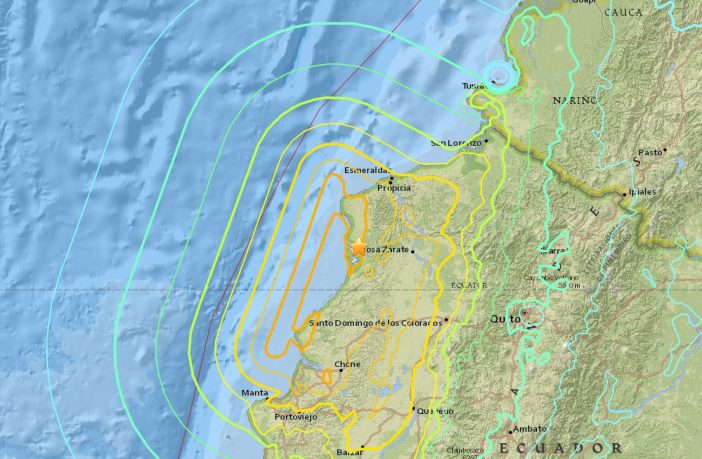Earthquakes in Japan and Ecuador have resulted in widespread destruction and many deaths. David Rothery, Professor of Planetary Sciences at The Open University, says that Ecuador’s earthquake at its underground source was about 6 times stronger than in the magnitude 7.0 earthquake in southern Japan, and the total energy involved was probably about 20 times greater. Around 20 magnitude 7 earthquakes occur somewhere on the globe every year.
Earthquakes in Japan
Of the Japanese earthquakes, Professor Rothery said: “The magnitude 7.0 earthquake that struck Kyushu on 15th April 2016 was about 30 times more powerful than its magnitude 6.2 predecessor on 14th April. Both sources were equally shallow (about 10km) and so the shaking at the ground surface was much stronger and more damaging during the second event.
“It is unusual but not unprecedented for a larger and more damaging earthquake to follow what was taken to be ‘the main event’.
“On 9th March 2011 a magnitude 7.2 earthquake in northern Japan was followed two days later by a magnitude 9.0 earthquake that caused a devastating tsunami. Fortunately this time the epicentres have been below land rather than under the sea, and no tsunamis have been triggered.
“On Kyushu there will probably continue to be aftershocks large enough to be felt for several days, but hopefully nothing more powerful than has already happened. The nearby volcano Mount Aso had a small eruption shortly after the 15th April earthquake. This almost certainly resulted from stirring up of magma and gas already present and nearly ready to erupt in the normal course of events. The earthquakes themselves do not generate fresh magma. The melting of rock is a slow process, related to events deep in the crust and the upper mantle, and is not caused by sudden slippage such as happens in an earthquake.”
Earthquake in Ecuador
Talking about the earthquake in Ecuador, Professor Rothery said:
“The earthquake in Ecuador was magnitude 7.8, which means that that shaking at its underground source was about 6 times stronger than in the magnitude 7.0 earthquake in southern Japan just over a day before. The total energy involved was probably about 20 times greater.
“This one was caused by the floor of the Pacific Ocean (the Nazca plate) being subducted below South America. The rupture began deeper underground (about 20km) than in the recent Japan quakes, which would have lessened the shaking experienced at the ground surface. The greater damage to buildings and the probable greater loss of life in Ecuador may reflect poorer adherence to seismic building codes in the construction of buildings and bridges. There have been seven magnitude 7 or greater earthquakes within 250 km of this one since 1900.
“The epicentre of the Ecuador earthquake was onshore. If it had been offshore, the strongest shaking would have affected a smaller area on land so the direct damage would have been less, but there would have been the potential to displace the ocean water strongly enough to cause a tsunami powerful enough to cause damage on both local and more distant coastlines.
“There is no causal relationship between the earthquakes in Ecuador and Japan.”



